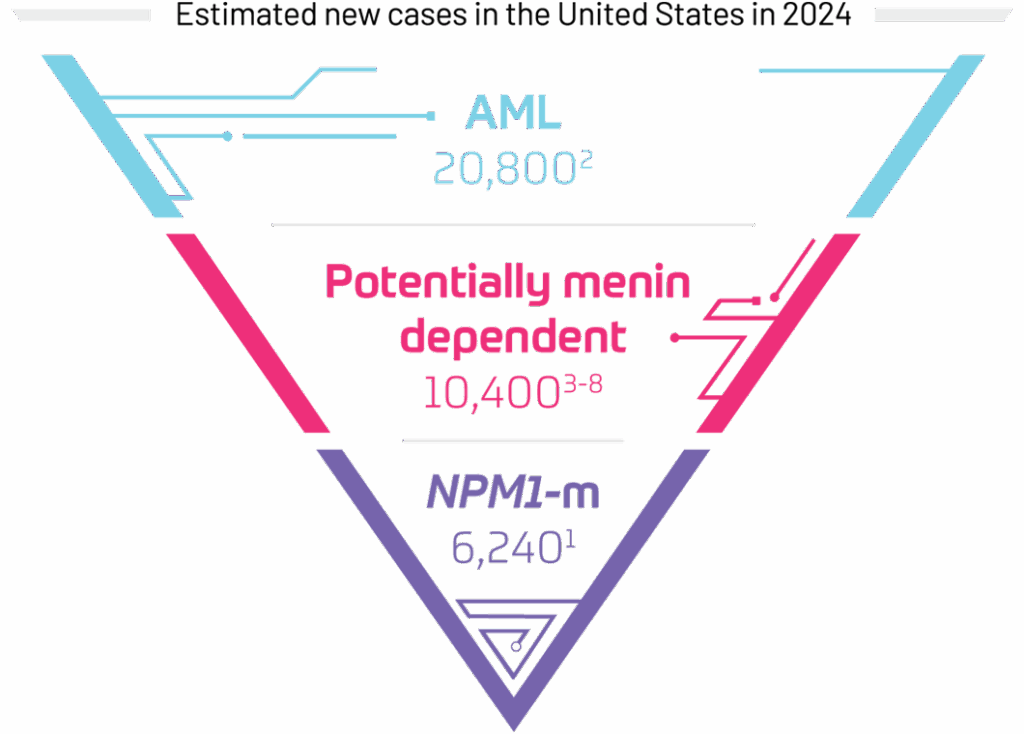
In patients with NPM1-m AML,
will relapse—most within 1 year11,13
aBased on a retrospective analysis of patients with R/R NPM1-m AML (n=206).11
Similar to those in the relapse setting without NPM1m,
Patients with relapsing NPM1-m AML face low survival rates11
NPM1m
NPM1-wt
NPM1m
NPM1-wt
Twelve-month survival was as low as 23% in the subset of patients aged ≥60 years with R/R NPM1-m AML.12
bBased on a retrospective analysis of patients with R/R AML with NPM1m (n=206) compared with NPM1-wt (n=1516) treated with standard-of-care therapies.11
NCCN Clinical Practice Guidelines in Oncology (NCCN Guidelines®) recommend expedited testing for NPM1m at diagnosis and for repeat testing at relapse or progression to guide treatment.14,15
Detection of NPM1m drives to a critical diagnosis of AML, even at ≥10% myeloid blasts or equivalents,c regardless of prior history of MDS.1,15
Comprehensive mutational profiling, including NPM1m, is critical for prognosis, risk stratification, and guiding treatment decisions.14,15
AML, acute myeloid leukemia; MDS, myelodysplastic syndrome; NCCN, National Comprehensive Cancer Network® (NCCN®); NPM1-m, mutated nucleophosmin 1; NPM1m, nucleophosmin 1 mutation; NPM1-wt, wild-type nucleophosmin 1; OS, overall survival; RFS, relapse-free survival; R/R, relapsed/refractory.